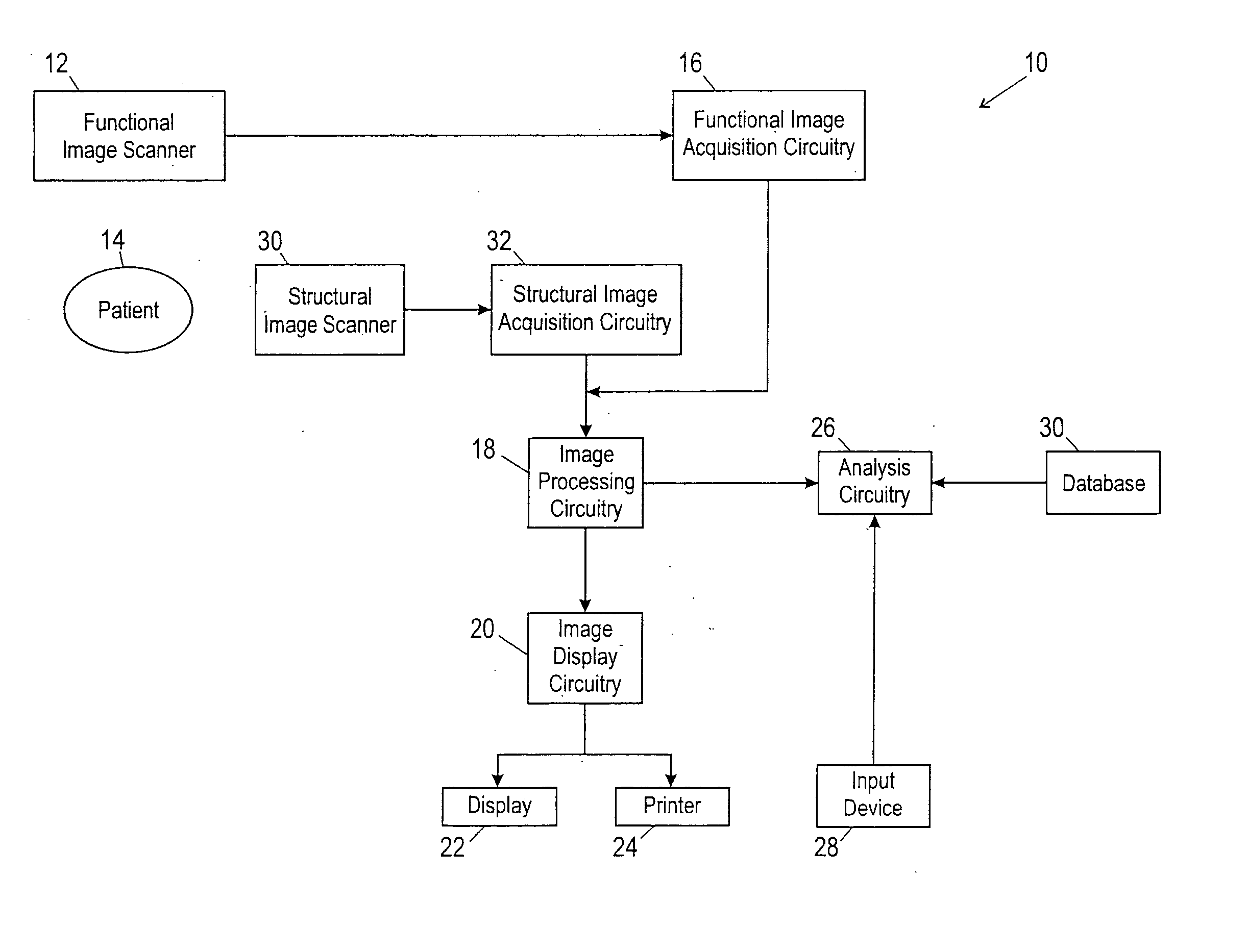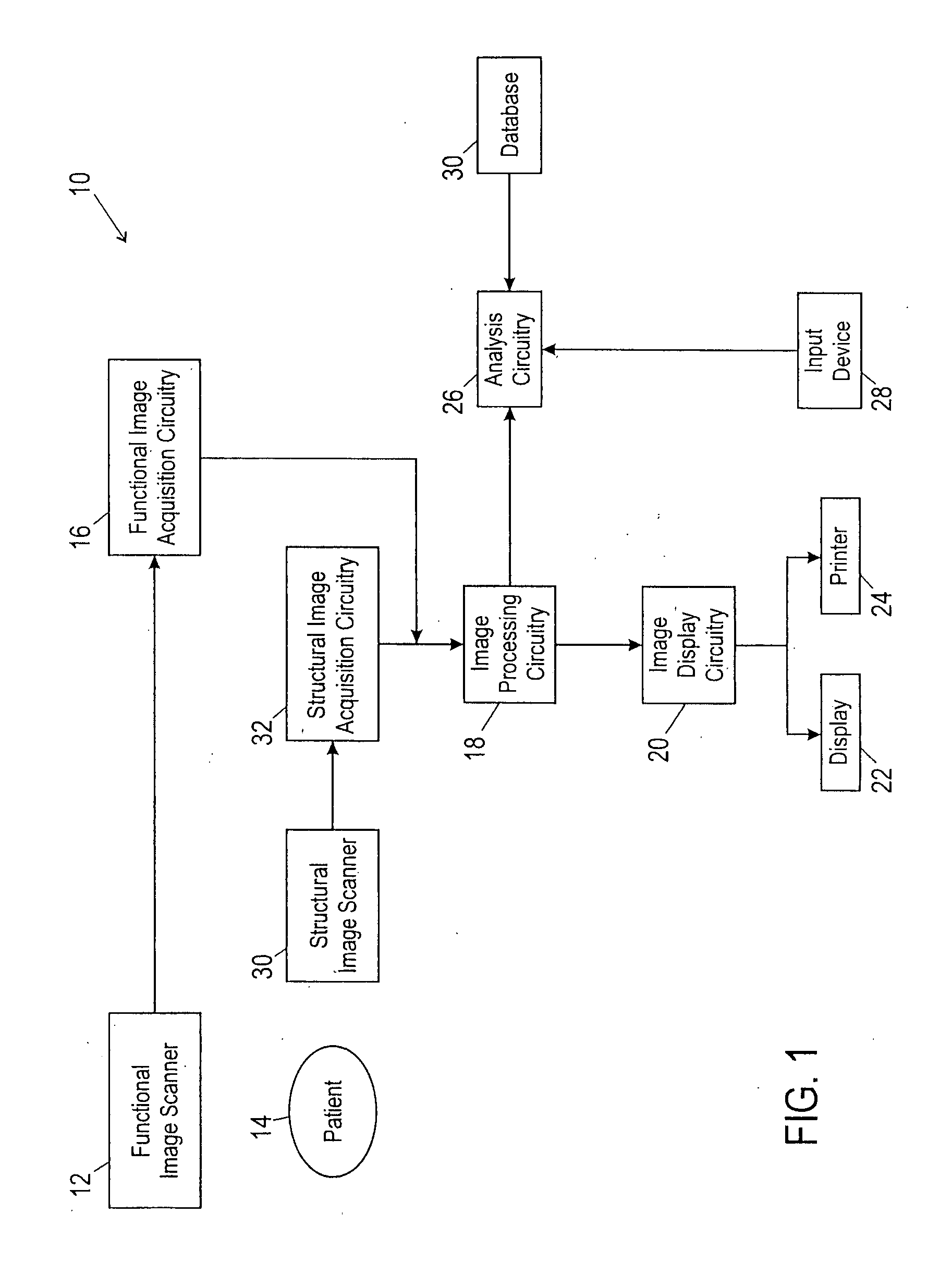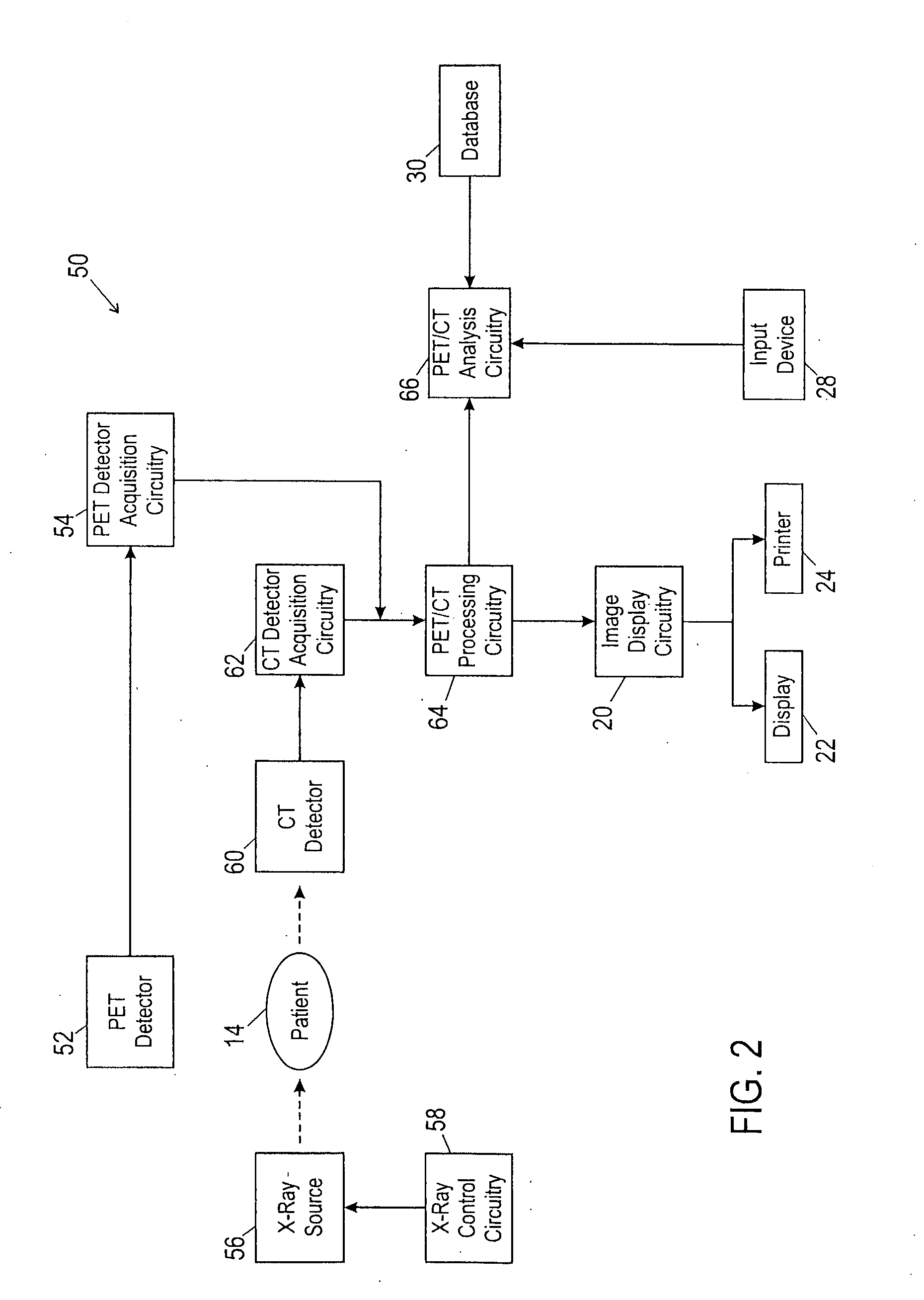Method and apparatus for automatically characterizing a malignancy
a malignancy and automatic characterization technology, applied in the field of medical imaging, can solve the problems of inability to quantitatively determine, clinicians may not know how to quantitatively determine, and the calculation involved in quantifying and assessing the significance of a signal change is too laborious to manually perform on a regular basis
- Summary
- Abstract
- Description
- Claims
- Application Information
AI Technical Summary
Benefits of technology
Problems solved by technology
Method used
Image
Examples
Embodiment Construction
[0014] The present invention provides for the automatic or semi-automatic assessment of cancerous or potentially cancerous tissues using multiple sets of image data, such as a set of functional image data and a set of structural image data. The respective sets of image data may be concurrently acquired such as using a positron emission tomography / computed tomography (PET / CT) system, or may be acquired serially using combined or separate imaging systems. The automated analysis routines employed allow for a quantitative analysis of malignancy characteristics of identified regions of interest within the functional and / or structural image data sets. These regions of interest may be identified in an automatic fashion. In this manner accurate, quantifiable results may be obtained to assist a clinician in the evaluation of a patient.
[0015] In FIG. 1, an exemplary image analysis system 10 for use in accordance with the present technique is provided. For simplicity, the image analysis syste...
PUM
 Login to View More
Login to View More Abstract
Description
Claims
Application Information
 Login to View More
Login to View More - R&D
- Intellectual Property
- Life Sciences
- Materials
- Tech Scout
- Unparalleled Data Quality
- Higher Quality Content
- 60% Fewer Hallucinations
Browse by: Latest US Patents, China's latest patents, Technical Efficacy Thesaurus, Application Domain, Technology Topic, Popular Technical Reports.
© 2025 PatSnap. All rights reserved.Legal|Privacy policy|Modern Slavery Act Transparency Statement|Sitemap|About US| Contact US: help@patsnap.com



